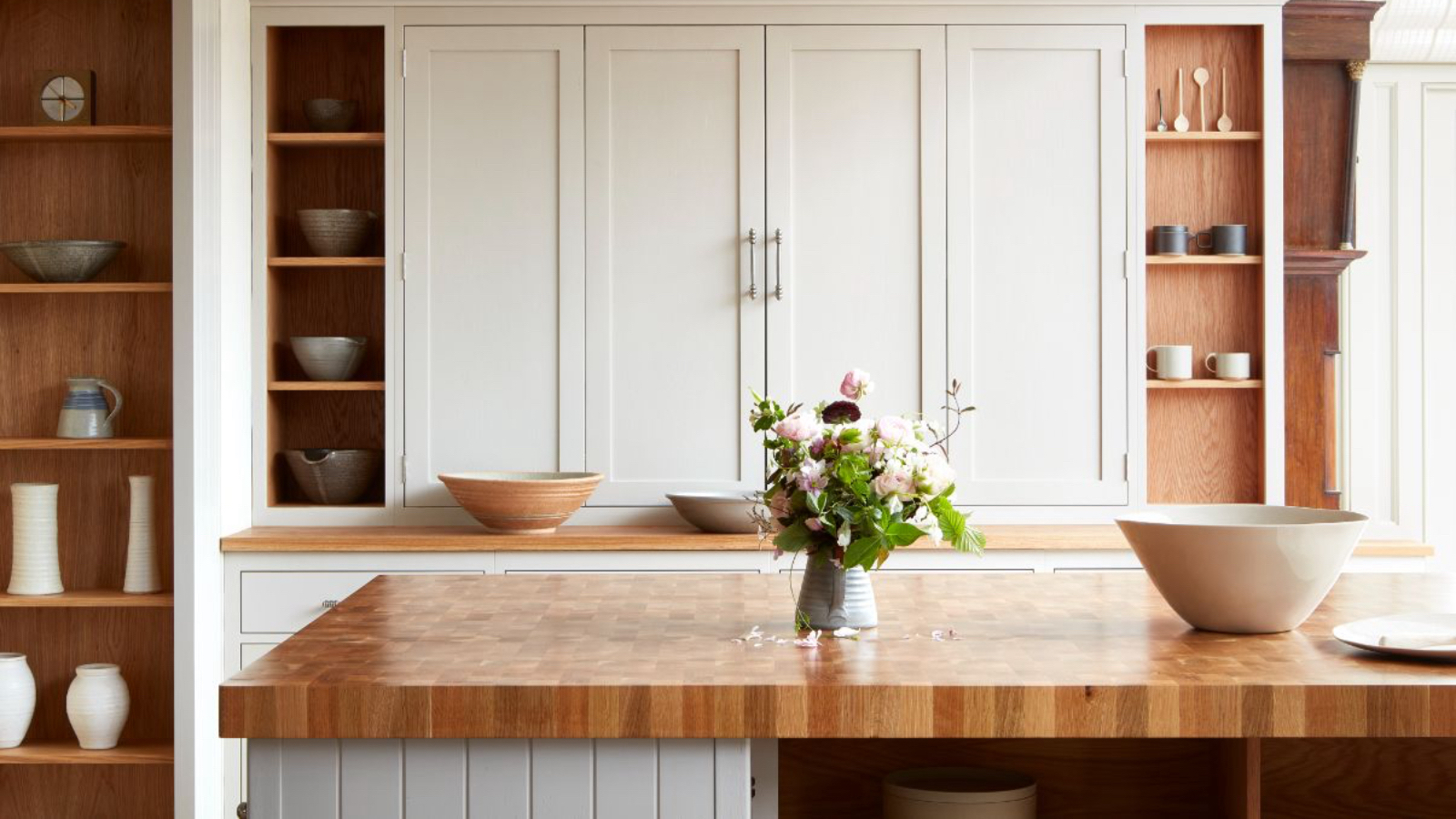
Wood countertops in a kitchen or a bathroom are undoubtedly lovely to look at. Wood creates a relaxing, naturally calm feel in the home and looks premium, elevating whichever room it's in with very little effort.
But that said, there are plenty of people who are understandably wary of wooden countertops. As chic as they may be, they are often perceived as high-maintenance. For example, won’t a wooden countertop be susceptible to damage and staining in a high-traffic bathroom or kitchen, both of which are also often prone to dampness and moisture?
So, are wooden countertops actually a good idea, like wooden cabinets? Or are they more hassle than they're worth? To work that out, we asked the experts for their thoughts on everything from the care and maintenance of wooden countertops to the installation costs and their susceptibility to damage.
Are wooden countertops a good idea?
To properly evaluate whether wooden countertops are a good idea for your home, it’s important to weigh up both their benefits and their possible drawbacks. These are the things that experts love about wood counters:
What are the pros of wood countertops?
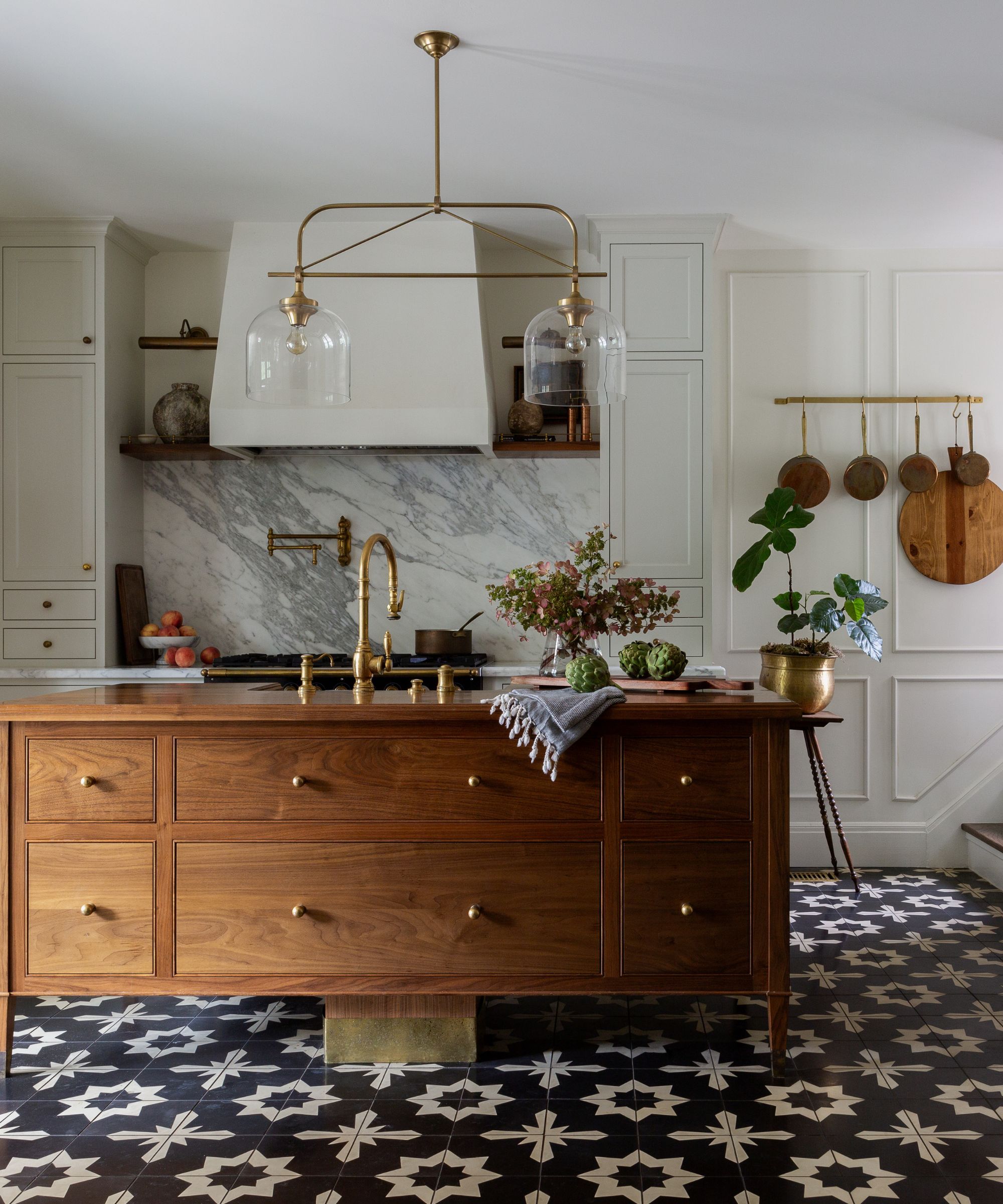
1. They look beautiful
Most people would agree that wood countertops look timeless and stylish in the home – while many kitchen countertop trends come and go, wood is a style that is unlikely ever to date. Josh Kou, Operations Manager at North Castle Hardwoods, says: 'Aesthetically, wood countertops can offer a much warmer (color and temperature) alternative to granite, other stone, and synthetic materials used in a kitchen. They can also be a very natural complement to the rest of your kitchen's decor.'
Many people also enjoy the fact that wooden countertops are a natural material and offer a snapshot of biophilic design in the home. Whether in your bathroom or kitchen, they bring the outside in and can even have a calming effect on your nervous system.
Of course, wood countertops are also versatile. They’ll fit right in whether you’ve got a more rustic, traditional kitchen or a modern bathroom. In fact, you can easily source darker or lighter woods to match your home's aesthetic.
Design expertise in your inbox – from inspiring decorating ideas and beautiful celebrity homes to practical gardening advice and shopping round-ups.
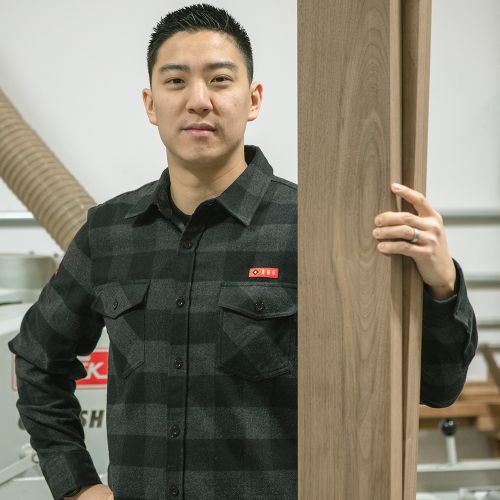
Josh Kou is an expert on wood, and is the shop manager at North Castle Hardwoods, based in Chicago. Josh is a second-generation lumberman, and has toured Japan and other parts of Asia several times to visit furniture factories and learn about their woodworking techniques. His lifelong experience with hardwood means he know exactly what people need when picking different woods for different projects.
2. They can be less expensive than other materials
Wood countertops are widely considered to be a far more affordable countertop choice than other premium options that may be used in a kitchen or bathroom, such as marble or quartz countertops.
This makes them a brilliant choice for those who want something premium but who don’t want to seriously splash out on more typically luxe, man-made materials for their counters or worktops.
However, it’s worth noting that wood is slightly more expensive to install than other kitchen worktop options like laminate and bathroom countertop options like tiling. So it all depends on the style you’re looking for in your home.
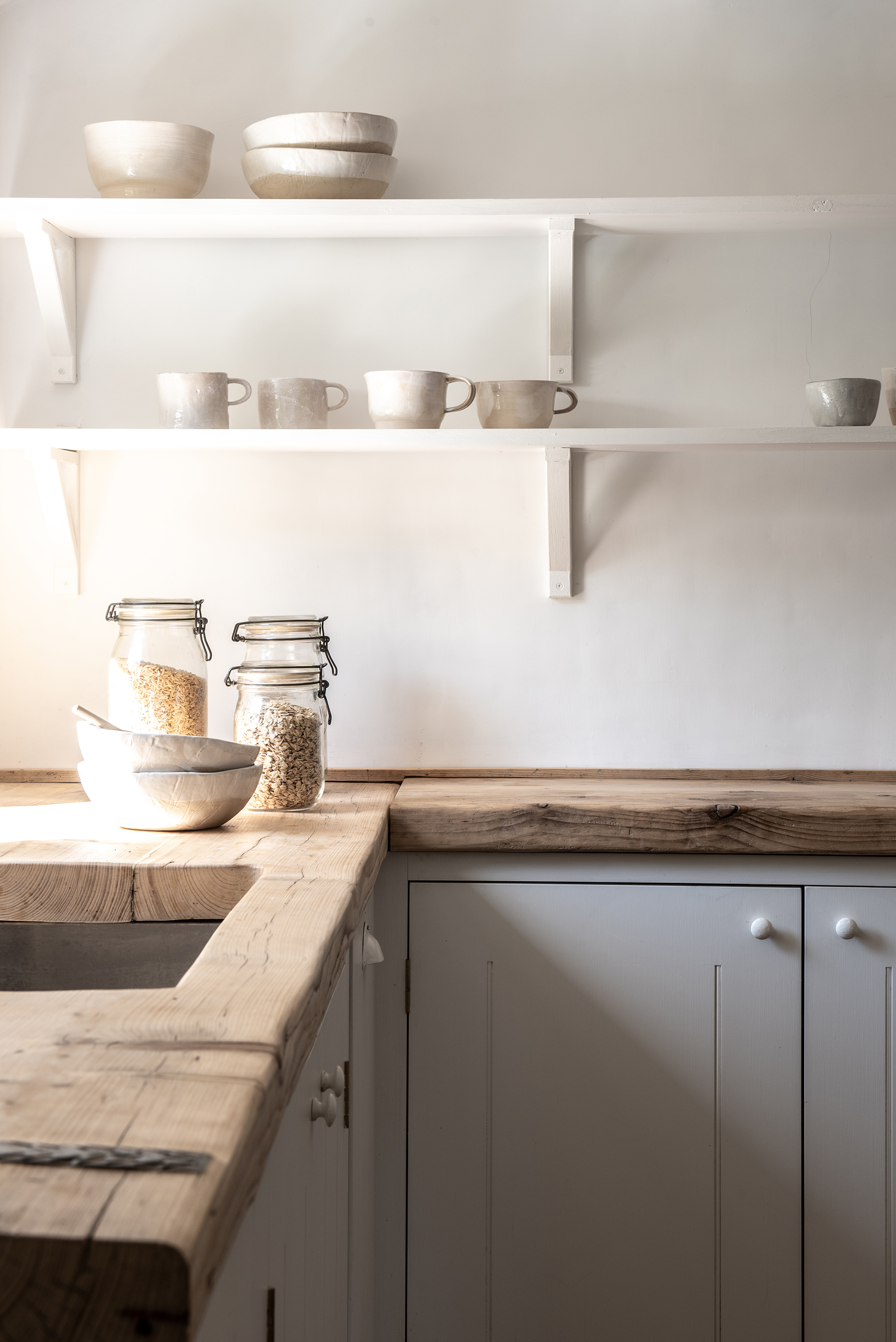
3. They are sustainable and should last for years
For those keen to implement sustainable materials in their homes, you can hardly get a better choice than wooden countertops.
Not only can the wood used for countertops be sourced and produced sustainably, but if maintained carefully, they should also last for years or even decades to come, reducing the need to replace your counters.
Similarly, any damage they may incur – such as discoloration, scrapes, or dents – can be fairly easily repaired via methods such as sanding and oiling.
Interior designer Artem Koprovinsky, founder of Arsight, explains: 'wood countertops must be looked after properly, but this will ensure that they remain beautiful and functional for years. They will need oiling occasionally, resealing, and gentle cleaning. This is a fundamental part of the preventive measures to stop bacteria growth, warping, and staining.'

Artem Kropovinsky, founder of the NYC-based Arsight, boasts over a decade of global interior design expertise in both residential and commercial projects. From transforming Brooklyn brownstones to reshaping Manhattan retail spaces, Arsight's portfolio showcases its design prowess on national and international scales.
4. They can actually be very hygienic
A common misconception about wooden countertops is that they are unsanitary for use in a kitchen or bathroom, where excess water, moisture, and contact with materials like food and cleaning products is usually very high.
After all, it’s not quite as easy to wipe clean a wooden worktop as a granite counter, for example, given that wood is porous and can more easily absorb any liquids or fibers it comes into contact with.
But according to the professionals, that’s not the entire story. Josh Kou explains, ‘Wooden countertops can be very hygienic. Studies have actually shown that some timbers, such as oak and pine, have been found to have excellent natural antibacterial and antimicrobial properties.’
He also dismissed the claim that the porous nature of wood makes it less hygienic, as most wooden countertops are specially designed with hygiene at the front of mind. 'Most timbers used for countertops are close-grained hardwoods, which means there is less permeability and fewer opportunities for bacteria to get a foothold'.
What are the cons of wood countertops?

1. They require regular sealing
Wooden worktops may be specially formulated to withstand liquid and food spills, but that doesn't mean you don't need to be careful with how you treat them. They do require regular sealing to prevent them from becoming water-damaged and from letting bacteria in. 'A good sealant is key in preserving wooden surfaces in the kitchens and bathrooms because of moisture,' explains Artem Koprovinsky.
Wooden worktops in kitchens are best sealed with a food-safe oil, but this isn’t a concern in bathrooms. Josh Kou explains: 'Countertops that see a lot of use will require refinishing as they wear down – but it is fairly simple to do so. Seal your worktops with a food-safe polymerizing oil such as tung oil (be sure it is pure tung oil and not an imitation, as many brands have misleading labels).
'When properly finished with a polymerizing oil, the countertop's surface will harden and be much more resistant to water damage,' he continues.
HOPE'S 100% Pure Tung Oil | $29.99 at Amazon
Seal your kitchen countertops with a pure tung oil such as this to protect them from water-damage and from letting bacteria in.
Regular re-sealing is also vital in bathrooms. 'Wooden countertops in the bathroom do not have to be finished with food-safe products, which means that polymer sealants, varnishes, and the like can be used,' Josh says. 'Lacquer is a great choice for bathroom countertops, as it seals and finishes, preventing staining and providing the lowest maintenance surface.
'Varnish, made from a mix of resin, oil, and thinner can also provide a similar low-gloss satin sheen that tung oil provides, but with a less heavy maintenance regime.'
'General best practices for eliminating moisture are also required if you have installed wooden countertops,' Artem explains, such as dehumidifiers and opening windows and doors for ventilation.
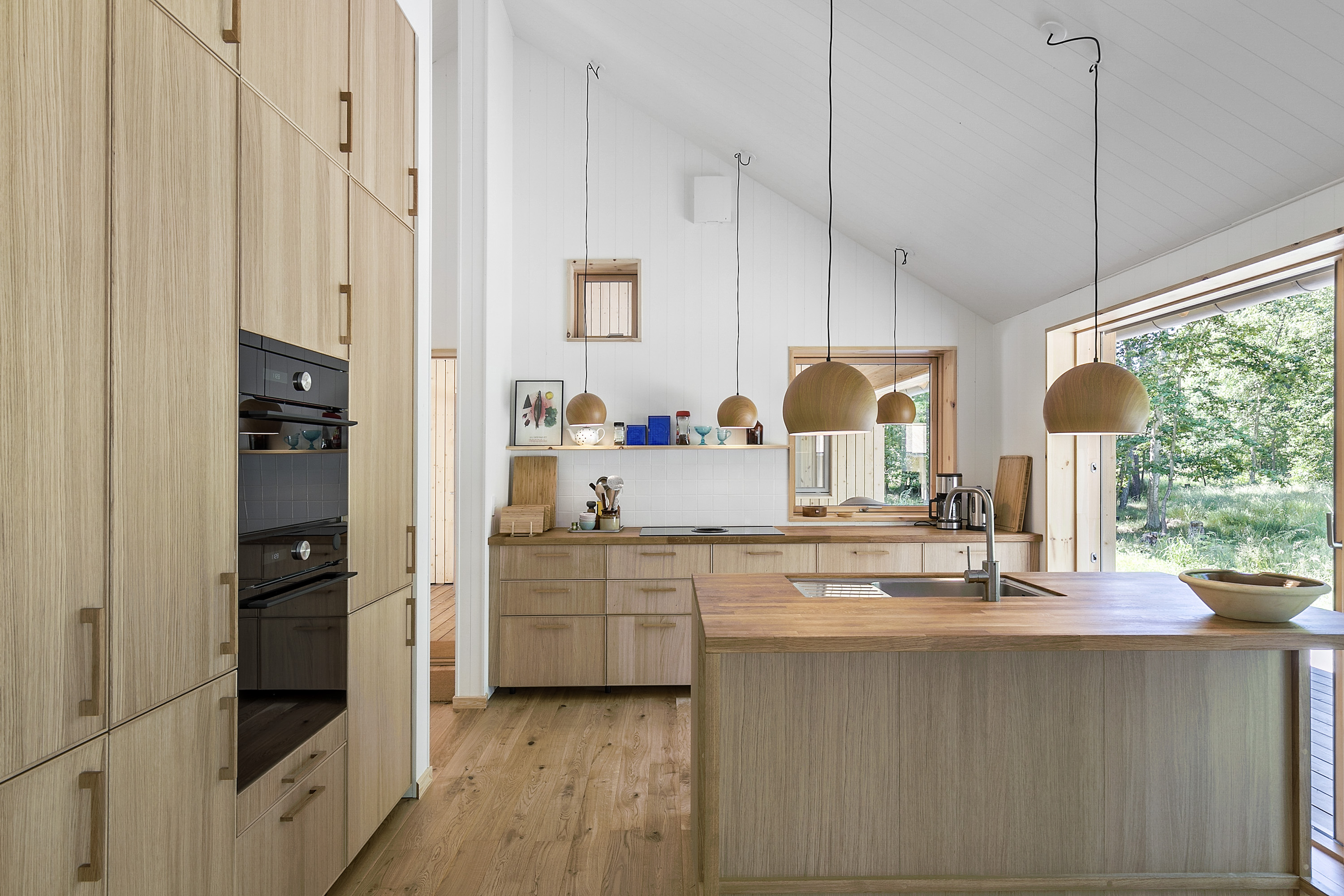
2. They can be damaged fairly easily
As wood countertops are slightly more delicate, one drawback is that they require almost constant maintenance and more daily consideration to prevent them from becoming damaged beyond repair.
For example, Artem Koprovinsky points out that it’s vital to quickly address spills and cooking splatters on wooden counters: 'Wood will become dirty or stained from acidic foods, chemicals, or liquids. But the moment spills are promptly wiped off, and a protective finish is applied, stains are less likely.'
Similarly, you shouldn’t leave water to pool on a wooden countertop for too long, such as at the sides of your sink. 'Don’t leave water standing, or use the wooden countertop as a draining surface,' Josh Kou warns. 'Even if the counter has been recently treated with tung oil, this will reduce its resilience and may cause staining.'
This also makes wood a trickier counter option for areas in your bathroom that come into direct contact with water. For this reason, it's not recommended to have wood counters within shower units.
Wood can also be susceptible to knocks and scratches if not treated properly, which is something to be aware of. Though it may sound obvious, don’t use the wooden countertop as a cutting board; this will degrade the surface and leave it vulnerable to water damage and bacterial colonization.
However, these issues are not insurmountable. If there is severe staining due to a water leak or other incident, wood can be sanded back to a finish that can then be re-oiled to recapture its as-new looks. This does, however, mean that wooden countertops may be the best option for your home if you are not willing or able to put in the extra time to tend to them.
3. Installation is slightly more complex
Though you're likely not putting in your own wooden countertops yourself, it’s worth being aware that installing wooden worktops can be a laborious process.
This is because wood requires certain accommodations during installation, such as ensuring that all your counters are completely level and that you have various measures in place to secure the wood into place. It is also important to ensure that all of the appropriate sealing takes place as the counters are being installed.
As such, if you have hired someone to install your wood countertops, you can reasonably expect that the process will take longer than it would to install worktops like laminate in a kitchen. It may also be slightly more expensive to install wooden countertops because of their more complex installation.
Are wooden countertops a good idea?
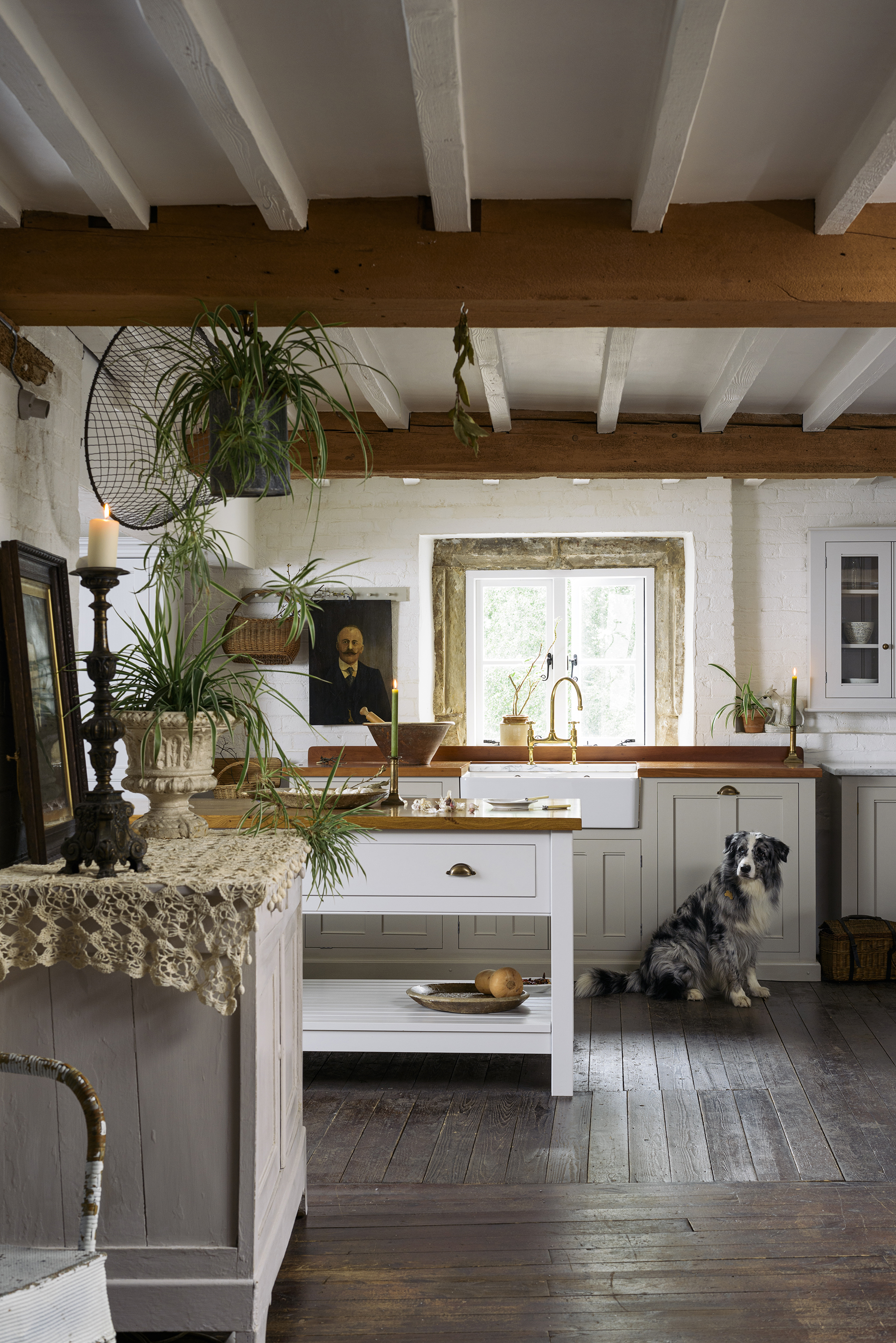
'Wood countertops suit people who really appreciate natural beauty in their home, and those who can deal with regular maintenance,' Artem Koprovinsky concludes. 'Sealing and oiling are needed often in order for wood counters to keep their beauty, so although they bring a special warmth to a kitchen or bathroom, they won’t suit everybody, especially those who prefer low maintenance surfaces.' For example, those with children may prefer a more easily cleaned surface.
Though wood counters need regular cleaning and maintenance, it’s also important to remember the many positives they offer. They are sustainable, long-lasting, and natural, and any damage can usually be easily rectified. It's not the only countertop that can stain easily; quartz can also stain if food or liquid is left to sit.
And, of course, there is the obvious point that they will look beautiful in almost any home – no matter your decor – and offer a timeless material that will likely never need to be replaced. So the decision really does depend on your needs and preferences.
How to care for wood countertops

- Seal them often: As mentioned above, sealing wooden countertops with an appropriate sealant is essential to avoid water damage, warping, and staining. Plan to refinish the wooden countertops at least once a year. Tung oil in the kitchen will seal the countertop's surface, helping it keep its looks and functionality, while a polymer sealant or varnish is best for the bathroom.
- Sand them: To remove any stains or damage on the upper layers of the wood, semi-regular sanding can also be a great idea for wooden countertops. You can usually buy sanding machines appropriate for worktops in DIY stores or online.
- Sanitize them: Though wooden countertops are naturally antibacterial, it’s a good idea to disinfect yours regularly to keep them clean. But steer clear of your regular, store-bought disinfectant sprays, and avoid bleach. Instead, use gentler options and natural alternatives, such as Method Wood For Good Daily Wood Cleaner from Walmart.
'A good clean with a hot damp cloth and a mild detergent solution will likely get rid of all but the most resilient bugs,' Josh Kou says. 'Washing up liquid in clean hot water is the perfect mix to get dirt off your wooden countertop. And, of course, dry off any excess water after cleaning with a dry microfiber cloth to avoid warping or water damage.' - Tackle stuck-on dirt gently: If a stubborn liquid stain or stuck-on food particles can’t be removed with the above method, there are options. 'In case of stubborn stains, a mixture of baking soda with water is very effective,' says Artem Koprovinsky. 'Do not use harsh chemical and abrasive scrubbers to help retain the wood’s finish.'
If you decide against wooden countertops but still like their rustic aesthetic, you may want to find other ways to use wood in a kitchen, such as through your kitchen cabinetry or reclaimed wooden shelves.
Amy Hunt is a freelance lifestyle writer and editor primarily covering homes and interiors, wellness, travel and careers. She was previously Lifestyle Editor at woman&home, commissioning and editing the homes, books and features sections of the website,
In 2019, she won the AOP Digital Journalist of the Year Award, for her work on womanandhome.com. Having worked in the industry for over eight years, she has contributed to a range of publications including Ideal Home, Livingetc, T3,Goodto, Woman, Woman’s Own, and Red magazine.
